


The types of wheeled-vehicles used for getting around on our streets these days are very different than they were a decade or so ago. Bike lanes aren’t just used by people on regular bikes anymore: take a look at who’s using Portland’s bike infrastructure and you’ll see all kinds of devices, from Lime e-scooters to large cargo bikes, and even electric one-wheelers.
But as transportation technology has rapidly evolved, bikeway design has largely stayed the same. A new working paper from the National Association of City Transportation Officials (NACTO), “Designing for Small Things With Wheels,” offers tips for city planners looking to bring bike infrastructure into the new era of micromobility.
“Rapid growth in cargo bikes and trikes for deliveries and family transportation means that many devices in a bikeway are wider, longer, and have larger turning radii than typical bikes,” the paper states. “E-scooters have smaller wheels than bicycles and handle surfaces, bumps, grates, and gradients differently than devices with larger tires.”
Some people may ask if people riding all these newfangled devices be allowed in the bike lanes at all. Yes, the NACTO paper says: even if an e-bike or scooter can travel faster than a regular one, the person riding it is still vulnerable to car traffic. Design improvements can make it so everyone can travel safely without competing for space.
“In most cases, bike lanes are the best, safest, and most comfortable place for people using the wide array of (often electrified) small things with wheels,” the paper states. “To ensure bikeway design is inclusive of all potential riders — regardless of which wheeled device they ride — designers need to accommodate more people using bikeways with higher speed and size differentials.”
The paper comes up with four key areas where “updated design thinking” is required to accommodate the new breadth of vehicle types: lane width, intersections and driveways, surfaces and gradients, and network legibility.
Lane width
Biking speed varies substantially from person to person, and as electric devices grow in popularity, the range of speeds you might see people using in a bike lane is also expanding. How can we make sure all of those people are able to travel safely?
One key way is to address lane width so people can pass each other comfortably in bike lanes, even if they’re riding bigger devices like cargo trikes.
“Wider bikeways can more comfortably accommodate the increase in passing events and the increase in side-by-side riding that comes with higher bike volumes,” the paper states. “Wider protected bike lanes are especially important for children and caregivers, side-by-side riders, people using adaptive devices, and people moving goods.
The paper provides a step-by-step method for determining necessary lane widths, which differs for one-way and two-way bikeways. Ultimately, these calculations will vary depending on who a planner determines is using the bike lanes, but the paper suggests considering the widest device people will use to determine the passing space width and making sure to consider the different between the marked width of a bikeway on paper and actual bikeable width. (Remember the “shy distance”: the “unrideable surface next to a vertical object” because it’s too close to a wall, curb, gutter, etc.)
Using these guidelines, a one-way bike lane accommodating cargo bikes should be 7.5-8.5 feet wide — doubled for a two-way lane. This is quite a bit wider than some of Portland’s bike lanes, including the two-way bikeway on Naito Parkway, which has seven feet of space in each direction.
If there isn’t enough space along the entire bikeway, NACTO suggests ways to make do: “along all facilities, look for opportunities to provide and designate wider passing areas. Uphill passing opportunities can be especially beneficial along facilities where people use devices with and without electric assistance.”
Intersections and driveways
Good intersection design is crucial for making sure interactions between people on micromobility devices and people in cars go smoothly. With new sets of wheels in the picture, planners have different considerations to make. The NACTO paper gives three recommendations for designing intersections and driveways, which are to:
- “Design enough space for people to wait at intersections” to avoid overcrowding and conflict between pedestrians, bikeway users and motor vehicle traffic, and provide an obvious safe place to wait so people don’t “spill into a crosswalk be forced to wait very close to motor vehicle traffic.”
- “Allow turning maneuvers and lane shifts at appropriate operating speeds” and make sure turning radii at intersections are “maneuverable by all devices operating in the bikeway.”
- “Ensure visibility of all bikeway users at intersections and driveways,” which varies “based on motor vehicle speed, driver expectations, and bikeway speeds.” People riding faster devices in the bikeways “necessitate longer sight distances so turning drivers can see approaching riders in time to slow, yield, or stop completely.”
Surfaces and gradients
With different sets of wheels come different on-pavement experiences. Things that might be okay to someone riding a regular bike may be insurmountable to someone on a skateboard or scooter with a set of small, dense wheels that don’t absorb shock well. (And honestly, the people on bikes will appreciate smoother surfaces, too.)
“For many riders with small wheels, even slight maneuvers to avoid debris can cause the user to fall, tip over, or lose control of the device. Trash, gravel, snow, ice, and other roadway debris become a major challenge for these smaller-wheeled devices and a considerable nuisance for users with larger wheels,” the paper states.
Some tips for planners: design a “smooth but not slick” surface that has good traction in all weather conditions and consider how to make grade changes more comfortable. (The paper endorses bike-friendly speed bump designs like the ones PBOT is currently seeking feedback about.)
But, as we all know, none of this matters if the roadways aren’t well-maintained. The paper states cities need to “develop proactive maintenance practices to ensure that bikeway surfaces are maintained to a higher degree,” noting that “relatively minor potholes, longitudinal cracks and seams, and other roadway defects can pose a hazard for smaller-wheeled devices.”
Network legibility
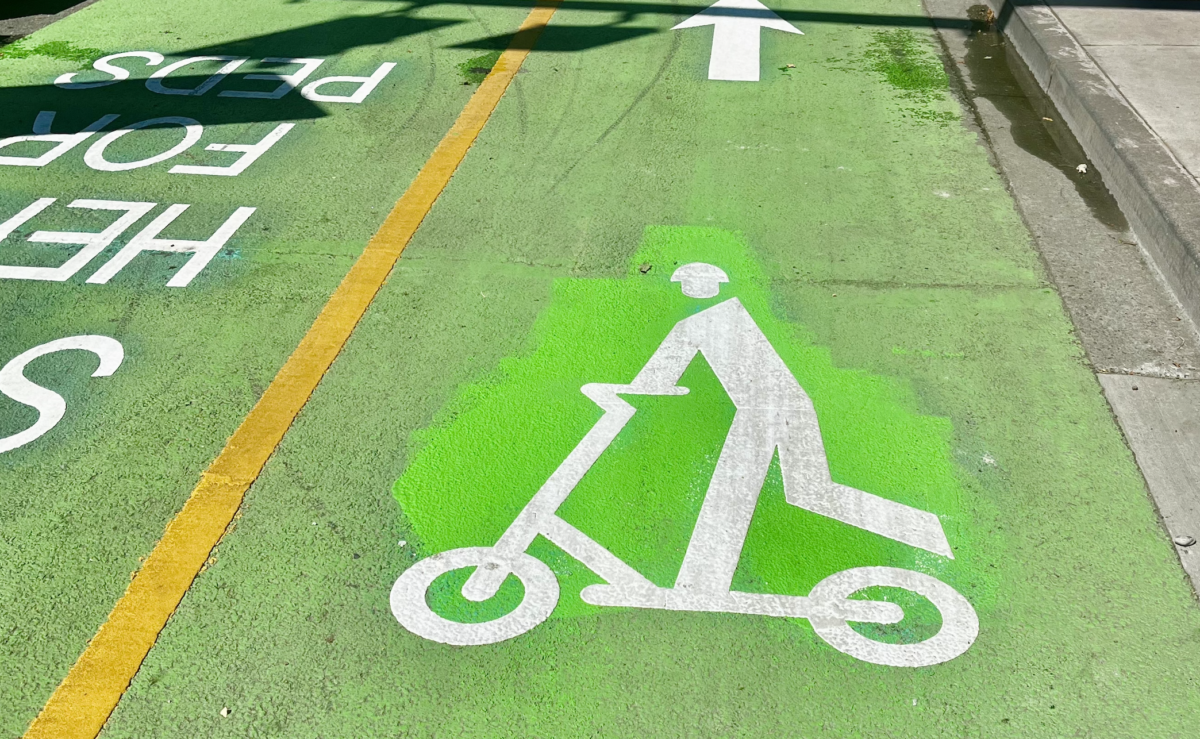
How do people know which bikeways to use? Wayfinding and network legibility is becoming a hot topic of conversation amongst bike advocates here in Portland, and apparently the concern is relevant across North America at large. The NACTO paper states that “people rely on a combination of formal information and obvious connections when deciding where to ride” and including “comprehensive wayfinding and intuitive, comfortable, and safe transitions between facilities improves the function of the bike network and of the sidewalk network.”
“Signs and markings are not a substitute for good design, but help set expectations for how to use the bikeway. They are helpful for clarifying the variety of ways people can use the bikeway and emphasizing that newly popular device types—like e-scooters and e-bikes—are welcome,” the paper states (using an example from Portland’s own Naito Parkway).
It’s interesting to think about how infrastructure should evolve along with vehicle types. I think much of the backlash to shared micromobility devices like electric scooters has to do with the fact that their adoption and popularity has outpaced infrastructure development in a lot of cases. In a place like Los Angeles, which has rentable scooters all over the place but a limited bike lane network, people are forced to ride on the sidewalks (even though the scooter companies say not to) or the street. This can result in an uncomfortable and dangerous travel environment for everyone.
As Portland prepares to potentially adopt plans like an e-bike rebate program and a cargo bike-friendly freight plan, the city will need to work even harder to make sure our streets accommodate all of these devices. This NACTO paper provides a good framework for where they could start. You can read the full paper here.



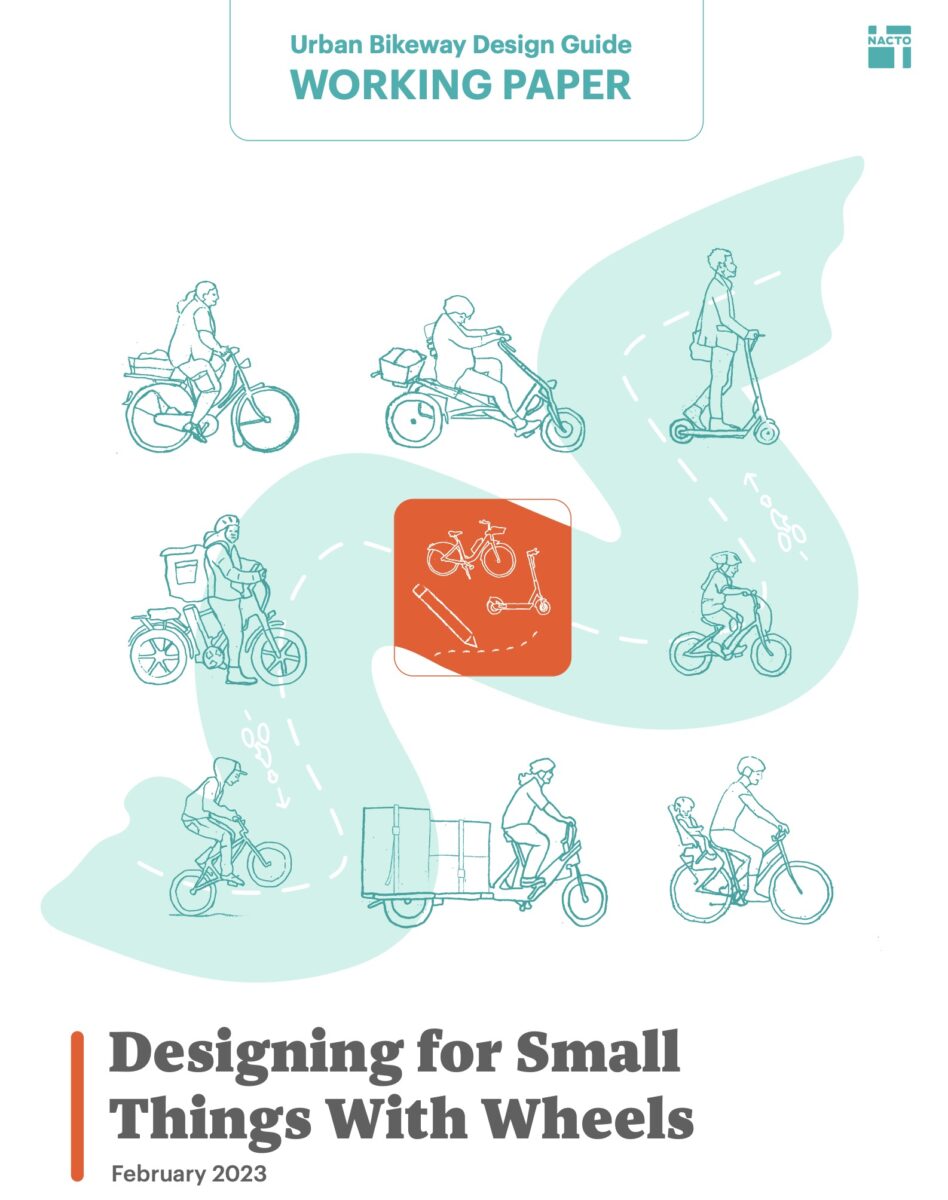
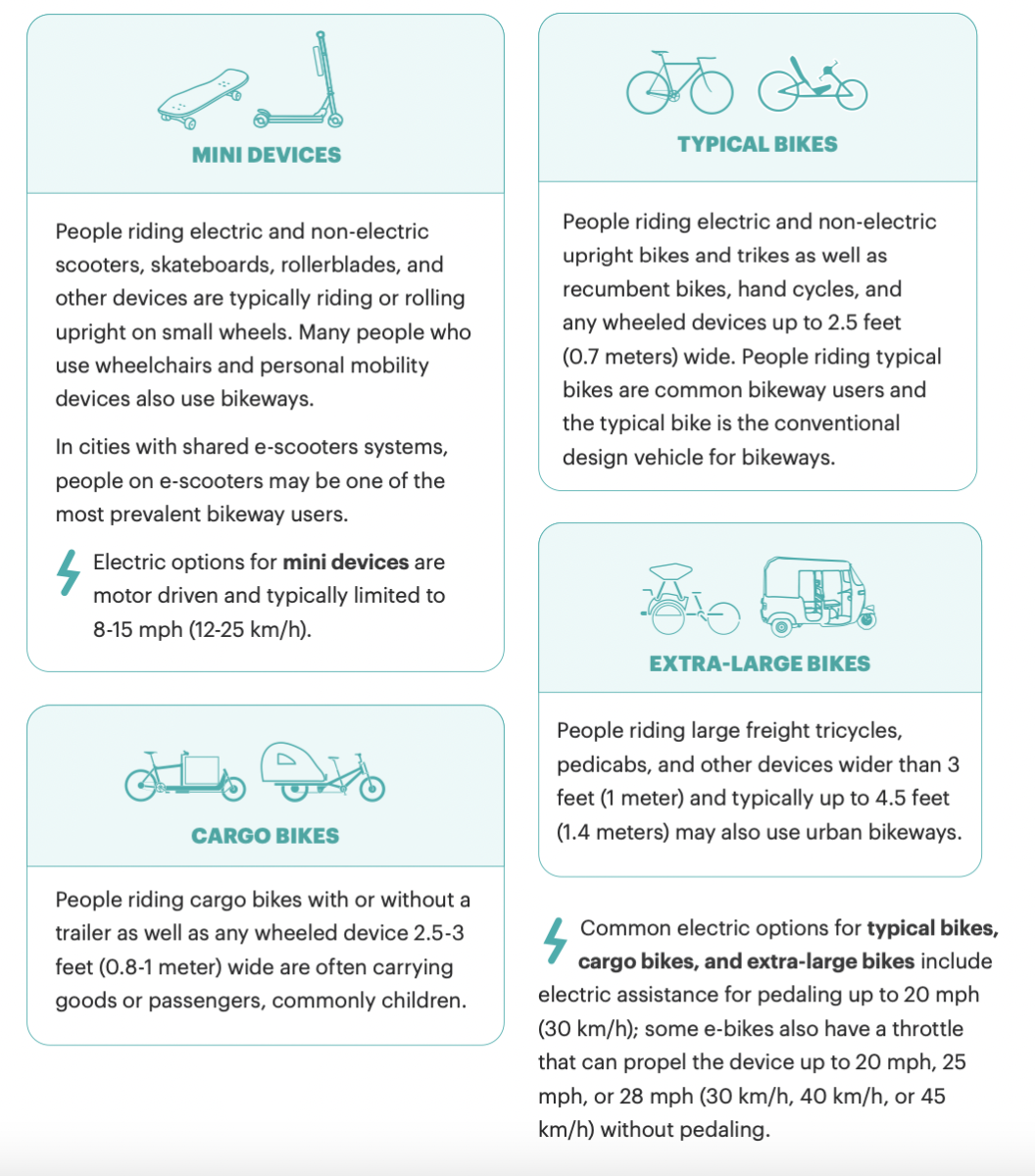
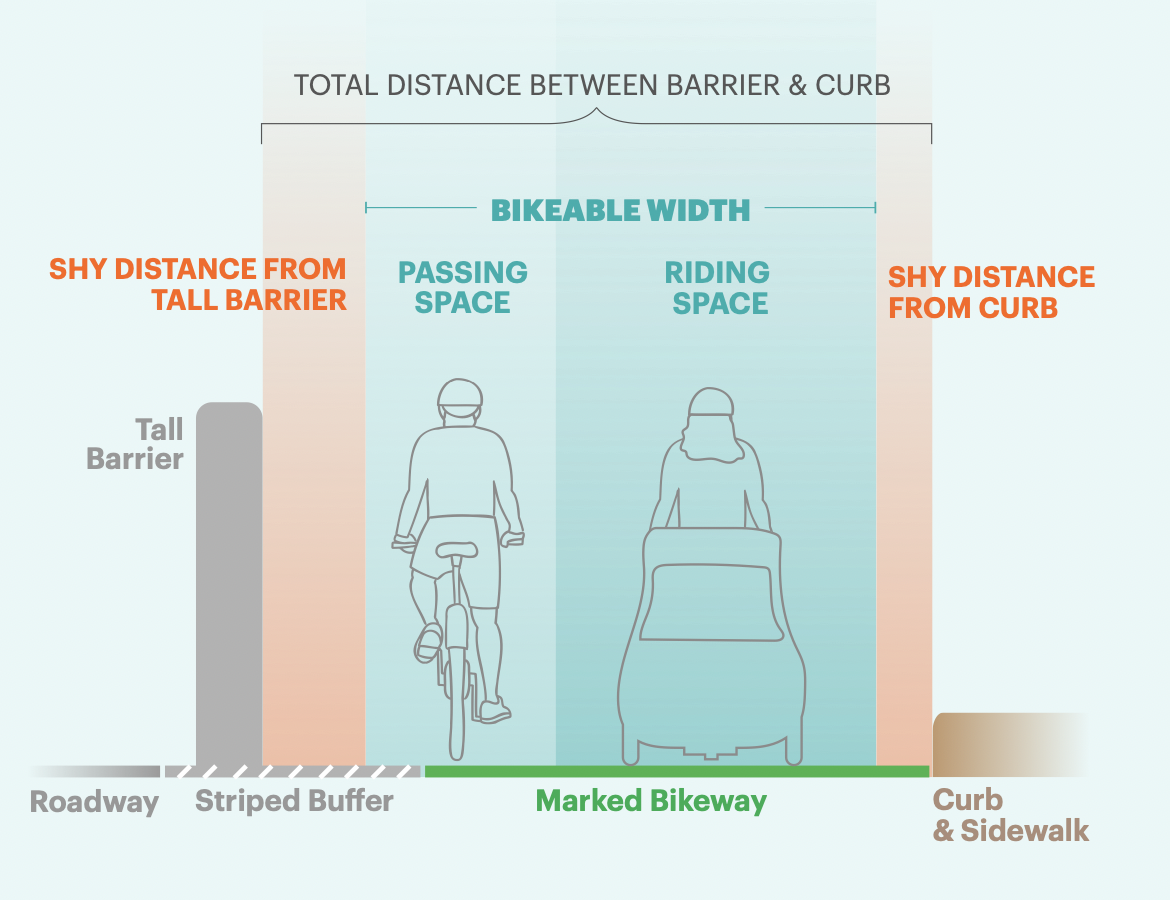

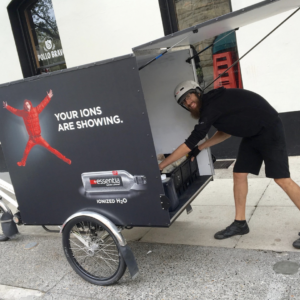

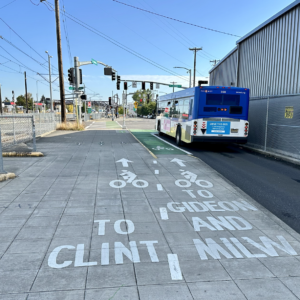

Thanks for reading.
BikePortland has served this community with independent community journalism since 2005. We rely on subscriptions from readers like you to survive. Your financial support is vital in keeping this valuable resource alive and well.
Please subscribe today to strengthen and expand our work.
Larger HPVs in the bike lane (the cargo van, for example) will *necessitate* a passing lane everywhere. Unlike cars which can all go the same speed with the wiggle of a big toe, HPVs depend almost entirely upon the power a human can generate. So stronger peddlers will need to be able to pass less-strong ones.
It will mean that bike lanes will have to be about twice as wide as they are now, and since many roads currently have only two travel lanes for cars and no bike lanes, we’ll be looking at rebuilding the road network from scratch – which isn’t going to happen. So maybe what we need to do is close off portions of the current road network to motor vehicles and dedicate that space to HPVs, though EVs will complicate the picture considerably.
I agree with the solution of closing off some roads to cars. I’m curious though, why do you think EVs will complicate the picture? I don’t know why we would treat them any differently.
(Side note: I don’t think we want to try and popularize calling them HPVs. That initialism is taken!)
I would suggest Street Transportation Device as an alternative.
Right – because an HPV is an STD, but not all STDs are HPVs.
Haha we’re screwed
These are great, but we all know it’s expensive to get new infrastructure built. Here is one infrastructure modernization that won’t cost PBOT a single penny:
Legalize riding an e-bike on the Springwater Corridor and other waterfront paths!
You read that right: this common and safe activity is currently illegal. I don’t know why the City is bothering to incentivize e-bikes when it has outdated restrictions in place on their use. The Springwater, specifically, allows for a bike trip downtown that competes favorably with driving a car, if time efficiency is your goal.
That really puts lie to the City’s climate change goals. Luckily, it should very, very easy to fix.
I agree that new infrastructure is expensive, and I would add the park space is super valuable to urban livability and a very limited resource. We need safe and relaxing places for people to wander, especially with kids and dogs. Honestly, bikes are already a negative presence much of the time on the waterfront, esplanade and Springwater- though I ride them all regularly. When my daughter was young, we had some very negative interactions with cyclists on trails, in park and along the Springwater/Esplanade. I do not agree that increasing wheeled travel in park on paths is the answer, I think moving these vehicles into the right-of-way is the only sustainable choice. People in parks should not have to follow the rules of the road! We are not going to get more park space, and we are not going to double the widths of our roads. I support creating as much safe space as possible for vulnerable road users, but this this report pints out the sever limitations of that. Entire streets will need to repurposed for e-vehicles and bikes. In the near-term- I think an educational campaign to tell people using e-bike/scooters, e-misc + cyclists + all the people driving that lanes are for ALL users, and that people in larger/faster vehicles are expected to slow down and leave space when they encounter another road user. Basically, we are not going to be able to separate our way out of future demands, and I really hope we do not sacrifice our quiet recreational spaces in the process of welcoming more smaller e-vehicles into our transportation ecosystem.
The idea that ebikes aren’t allowed the Springwater between OMSI and Sellwood is pretty bananas compared to the high use of this stretch as an important transportation corridor.
Yup it’s bananas!
https://bikeportland.org/2018/09/18/city-says-e-bike-use-on-park-paths-is-a-violation-but-its-not-enforced-289611
I did a test ride on an ebike from a shop near the Springwater and didn’t learn until after that it was technically illegal to have ridden the ebike out to Boring. Seems a bit ridiculous to have it be in a legally gray area, especially when shops are recommending people do demo rides there.
Ted wheeler and his cronies are an unfit bunch to serve the town. Only interested in selling the town to rent collectors
That’s a good perspective. I agree that the separating all users would be unlikely, and I agree that an education campaign is a low-hanging fruit way to start.
Everybody wants to fight climate change, but very few people are actually comfortable disrupting the status quo in ways that would seriously reduce our carbon footprint. Parks sure are important! But providing transportation alternatives is an important element of reducing our carbon footprint, too.
What is the marginal carbon reduction due to replacing car commutes along this route with e-bike commutes? Is that worth the cost of increased crowding on the path and the increased chance of user conflict, if e-bike use were to be legalized?
Maybe you’d say that my frame is wrong: why should we crowd the Park with commuters on e-bikes, and not, say, turn McLoughlin Blvd into a giant bike path? To which I would only ask “show me the voters and show me the money.”
“Path dependency” is the rub. We have paths now, and people ride them now! These paths are among the fastest, safest, and most pleasant places to ride in the City. Do you think that the City could possibly create equivalently useful path-like facilities that aren’t in parks? Without that, we will continue to see e-bikes and other modern transportation alternatives on our park paths.
I commute on the Springwater Corridor to get to work and back. Except for sunny weekends, it’s not that crowded. There are usually like 8 or so people riding bikes between Sellwood and town; several of those are riding e-bikes.
There seems to be plenty of capacity, at least as regards weekday commuting. With all due respect to the poor experiences you’ve had on the Springwater, I think our climate demands big changes, and legalizing e-bikes on the Springwater is worth it.
It doesn’t have to be expensive, just comprehensive. Cars smash into every inch of the city, that’s expensive. Less driving more money for safe transit. it’s a trade. Not to mention gas money leaves your community, which results in poorer economy. Basic math.
I read this as an apt criticism of Naito. PBOT went out of their way to invent and paint a scooter symbol, but could not be bothered to think through the design details. They inexplicably made partial concrete sidewalks (across the bike lane, but not the driving lane. The reverse makes sense as the concrete is more durable and will provide a more accessible surface for longer in the corsswalk, and the sharp bump where the asphalt/concrete meet is not noticeable to cars). They also allowed the bike lanes to built so poorly that there are large puddles after each rain! The most egregious is the closed pedestrian crosswalk at Morrison:https://www.google.com/maps/@45.5175571,-122.672748,3a,39.3y,178.91h,87.25t/data=!3m6!1e1!3m4!1suw9nlpzqmooJ1jkSjIyUkw!2e0!7i16384!8i8192
They also neglected to figure out the connections to the bridges. PBOT’s approach is 100% to just add paint.
The width of the protected bike line on Hawthorne is mostly disappointing. Technically you can pass another regular bike but only if they’re riding to the right and no one is because there’s storm drains puddles and debris there. So the only way to pass another ride is to go out to the parking lane or bus lane.
The light timing is also constantly changing and is unpredictable. For a while there I could ride at around 12-15 mph to make the lights from Grand all the way to 12th. Every now and then the 12th light would be ahead and turn red when you got to it but it was maybe 1 in 5 times. For the last couple of weeks it’s been completely off. Yesterday the 11th light turned red before I even got to it. I’ve been taking Clay much more often as a result. I’m not really sure why they’re messing with all this timing but it’s annoying.
The other greenway lights have had their timing changed recently too. For the most part they were timed to change every minute, per their own policy, but in the last couple of months that’s been changed to 70 seconds and now 75-80 depending on the light. I assume they’re trying to accommodate drivers as per usual.
The only upside to all of these changes is they’ve been adding advanced walk signals to the lights. I’m sure some bored cop will give me a stern talking to or ticket one day and some cyclists have even commented about me going against the red but I’m going to keep doing what’s safer for me and faster for everyone.
I’ve been shouted at for doing this (and for “running” stop signs — sigh). As the number of transportation cyclists drops the percentage of people riding who are bike-scolds, apparently, increases.
Yeah, and, like, we dedicate so much space specifically to cars so some dedicated spaces for small wheels is in order. Heat maps show us where to do it and how to streamline it. I saw a Pbot poster of where bike collisions and injuries occur, basically where bikes are forced to be in the mix with cars. AKA everywhere people ride bikes. We CAN do better with very little, just protect the vulnerable folks and everyone wins. Seems simple enough, 10/10 nimbys will disagree though